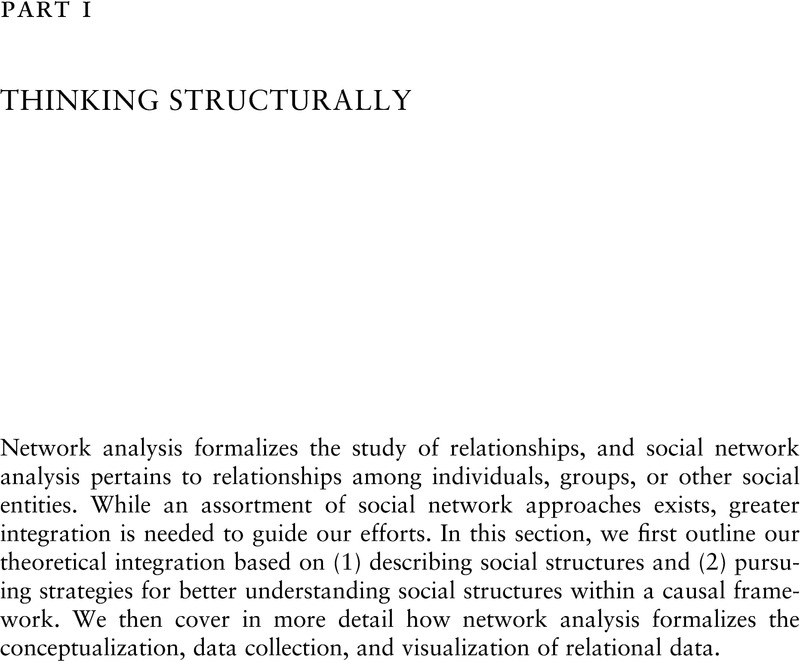Part I - Thinking Structurally
Published online by Cambridge University Press: 21 September 2023
Summary

Information
- Type
- Chapter
- Information
- Network AnalysisIntegrating Social Network Theory, Method, and Application with R, pp. 17 - 114Publisher: Cambridge University PressPrint publication year: 2023
References
Suggested Further Reading
General Theoretical Formulations. The theoretical foundations of social network analysis are deep, and we cannot hope to cover all pieces here. Rather, we want to highlight a handful of key pieces that have helped shape how we view the field.
Illustrative Empirical Works. Social network analysis is characterized by a tight linkage between theory and method, as researchers develop tools to solve empirical questions. As such, some of the best general network theory has been developed in the context of empirical investigations.
Suggested Further Reading
In addition to the general methods texts listed for Chapter 1, useful deep dives into methods discussed here include:
Suggested Further Reading
Suggested Further Reading
We encourage readers to explore early issues of the journal Sociometry, which includes stunning work, all done by hand.
